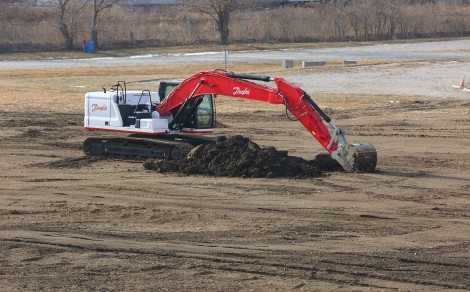Energy efficiency: The first step to decarbonising construction

More investment is also needed in providing infrastructure for the electrification of construction sites. Not all work sites have enough charging energy to support a fleet of electrically powered excavators. Those sites that do have adequate electrical power are often very big, such as quarries, and require battery-swapping in the field at the beginning and end of every shift. Given that batteries weigh tons, this poses operational challenges.
While the world is rapidly scaling up much-needed renewable energy sources, we do not have unlimited green energy in the grid. The amount of additional green energy needed for electrifying the excavator fleet is not trivial: a rough estimate says that if all the world’s excavators were electric, they would consume as much energy as is generated by all the world’s offshore wind turbines today (7).
Despite these challenges, the industry is already pushing toward electrification. Today, small electric machines up to 3 tons exist and often work in city-centre locations. However, to make a substantial impact on CO2 emissions in the sector, solutions for larger machines over 10 tons are needed. These machines account for only 56% of units sold but contribute 92% of CO2 emissions (8).
Boost productivity and slash emissions with energy efficiency
Today’s excavator systems are only 30% efficient, meaning that 70% of the energy the engine produces is wasted instead of helping the excavator perform useful work. The key to reducing the footprint of these machines is to implement energy-efficient technologies that can immediately reduce diesel use and at the same time address some of the challenges for electrification.
Electrification is not a question of “all or nothing.” For some vehicles that cannot yet be fully electrified, it is possible to downsize the diesel engine and electrify critical components of the machine, creating a significant benefit from the increased efficiency of an electric system.
Improving system efficiency reduces the size – and therefore the cost – of batteries and electric drive motors needed to power the machines. It also reduces the amount of charging power as well as the amount of renewable energy generation required. This lowers the capital and operating costs of these vehicles, thereby accelerating market adoption. Ultimately, this means combining the most efficient technologies of today and tomorrow with the older machines of the past to reduce energy demand. Until full electrification can be achieved, this combination is the best and most practical solution available, and the results are impressive.
We can improve a machine’s energy efficiency in three ways. The first is by reducing idle losses with variable displacement pumps, digital displacement, and decentralised drives. Machine usage data available through telematics can also be used to advise optimisation opportunities. The second way to improve energy efficiency is to reduce hydraulic losses with solutions such as individual metering control, direct-driven hydraulic actuators, digital hydraulics, and multi-chamber actuators. And finally, through the development of energy recovery systems, we can recycle the unused energy during operations such as boom lowering and slew deceleration.
-
Farnborough International Airshow
22 - 26 July, 2024
Farnborough International Exhibition & Conference Centre










